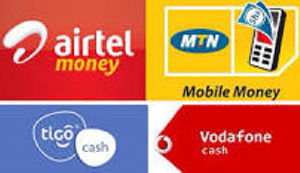Opinions of Thursday, 13 December 2018
Columnist: Kelni GVG
Ghana: Behind the rise of mobile money
While East African countries such as Kenya, Tanzania and Uganda have been at the forefront of the use of mobile money services since their launch a decade ago, in West Africa, Ghana stands out by the number of registered mobile transactions, whose value now represents 75% of GDP.
With an estimated penetration rate of 45%, according to the GSMA Mobile Economy 2018 study, the success of mobile telephony is well established in sub-Saharan Africa. But has the impact of the rapid growth of mobile transactions been measured? Ghana is one of the most prosperous and fast growing mobile money markets in the area.
According to the IMF, two figures sum up this surge: the number of registered accounts, which jumped from 3.8 million in 2012 to almost 24 million in 2017, and the number of transactions, which was close to one million last year, compared to 18 million five years earlier. These transactions comprised mainly of money transfers to relatives and phone credit refills, as well as bill payments, purchases of goods and services, insurance subscriptions, etc.
A favourable regulatory framework
This trend is largely due to the evolution of the regulatory framework. The turning point was in July 2015, when the Bank of Ghana issued new guidelines for mobile money services, replacing those of 2008. The new regulatory framework dramatically overhauled the industry by allowing operators to own and operate mobile money networks under the supervision of the Central Bank, through their own subsidiaries. In less than a year, operators heavily invested in recruiting agents (whose number stands at about 150,000 in Ghana) and advertising for these new services. As a result, more than 40% of the population now uses them, and the average value of each transaction increased fivefold between 2012 and 2017.
Financial inclusion and revenue lever
In May 2018, the country took the path of interoperability, opening the way for money transfer operations between all mobile network operators and banks in the country. There was also the addition of new services such as transfers from a bank account to a mobile, commercial transactions, taxes and retirement pension payments. Besides making life easier, they gave a new boost to financial inclusion in a country where the banking rate is close to 40%.
This milestone in Ghanaian financial system modernization forecasts new and varied uses such as school fees payments, as it is already implemented in Tanzania, Kenya and Uganda where it is particularly relevant in rural areas.
For the Ghana Revenue Authority, this approach of financial inclusion represents a lever for mobilizing revenues, mobile money being a concrete and traceable source of income for the informal economy. A significant opportunity starting with VAT which can be better controlled, if the operator automatically transmits to the tax services the value of payments due to each company.
By making financial flows from informal activities visible, it reduces the State's shortfall - which is close to 15% of the GDP because of the informal economy - and provides it with additional resources to finance its development in the context of the president’s vision of “Ghana Beyond Aid”. This undoubtedly justifies the use of mobile money transaction monitoring as implemented since 22 October 2018.
Entertainment










